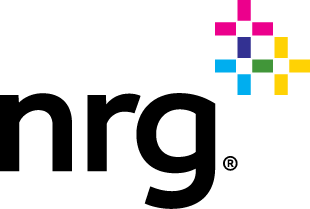NRG’s CEO Talks Sustainability to Investors

Originally published on Greenbiz
Editor’s note: The following is adapted from remarks made by Mauricio Gutierrez, president and CEO of NRG, during an earnings call in late February, a rare instance of sustainability issues being front and center during a CEO investor presentation.
I want to talk to you about our comprehensive sustainability framework. It is one that expands across our business from operations and employees to customers and suppliers. Sustainability is embedded in our culture, aligned with our strategy and necessary for our long-term success.
Our sustainability philosophy is guided by three core principles: accountability, transparency and engagement.
Let me start with accountability. Good intentions are just not enough; we need goals that are clear and measurable. We have a few examples, including safety, environmental responsibility and our commitment to inclusion and diversity. You have heard me say this before, safety is our No. 1 priority.
We measure and report our safety performance every quarter, and we hold ourselves accountable to top decile performance. In this way, we are able to take corrective actions to improve our performance in periods when we fall below our standards. Like safety, we have many other goals across our business that measure not just what we do but how we do it, including our carbon reduction goals, which I will address in more detail in a moment.
Measurable goals are important, but we also need to communicate our progress in a clear and transparent way. We do this every year with the release of our sustainability report. We were the first and only company in our sector to comply with the Sustainability Accounting Standards Board, or SASB, back in 2016. We were one of the first companies to publicly commit to the Task Force on Climate-related Financial Disclosures, or TCFD. And recently, we were awarded leadership level across all three Carbon Disclosure Project, or CDP, programs on climate risk, water security and supply-chain engagement.
Finally, we are committed to engaging and investing in the communities where we live and do business, from major cities with large concentrations of customers to smaller communities that are home to our power plants and employees. In 2019 alone we donated to almost 700 organizations, but we aren’t just focused on monetary donations; we are also investing our time in the communities with over 11,000 volunteer hours by our employees across 264 organizations. We also participate with organizations like CECP [Chief Executives for Corporate Purpose], where we presented our sustainability framework and long-term strategy to investors. This engagement is something that makes us very proud and defines us as a company.
Now, I want to talk to you about our decarbonization efforts as we transition our business away from traditional generation and closer to the retail customer.
In September, we accelerated our carbon reduction goals to conform with the 1.5-degree [Celsius] trajectory. This means reducing our carbon emissions 50 percent by 2025 and to be "net zero" by 2050.
These goals are some of the most ambitious in the sector, and we are proud of the progress that we have made to date. We are already 83 percent of the way to our 2025 goal with clear line of sight to achieve it with our current portfolio. Although our baseline is 2014, we have been decarbonizing our fleet since 2010. We have reduced our carbon emissions by 40 million metric tons in just the last 10 years. That is the equivalent of taking 9 million cars off the road every year. As you can see, our actions move the needle. We will continue to share our progress and plans in the months to come.
From an earnings perspective, as we progress towards decarbonization, coal generation is contributing less to our earnings. In just the last six years, coal as a percentage of our total revenues has decreased 55 percent, and that is inclusive of capacity revenues. This is an important distinction as energy revenues have been the bulk of the decline, and our coal assets in the east now act primarily as insurance for grid reliability and not for electric generation.
Finally, sustainability is an integral part of our culture and incorporated in our strategic decisions. We continue to take concrete actions to limit our own carbon footprint, while also providing customers with cleaner energy choices, such as electricity plans from renewable resources.
I look forward to updating you on our progress in the future and be on the lookout for the release of our annual sustainability report in early May.

